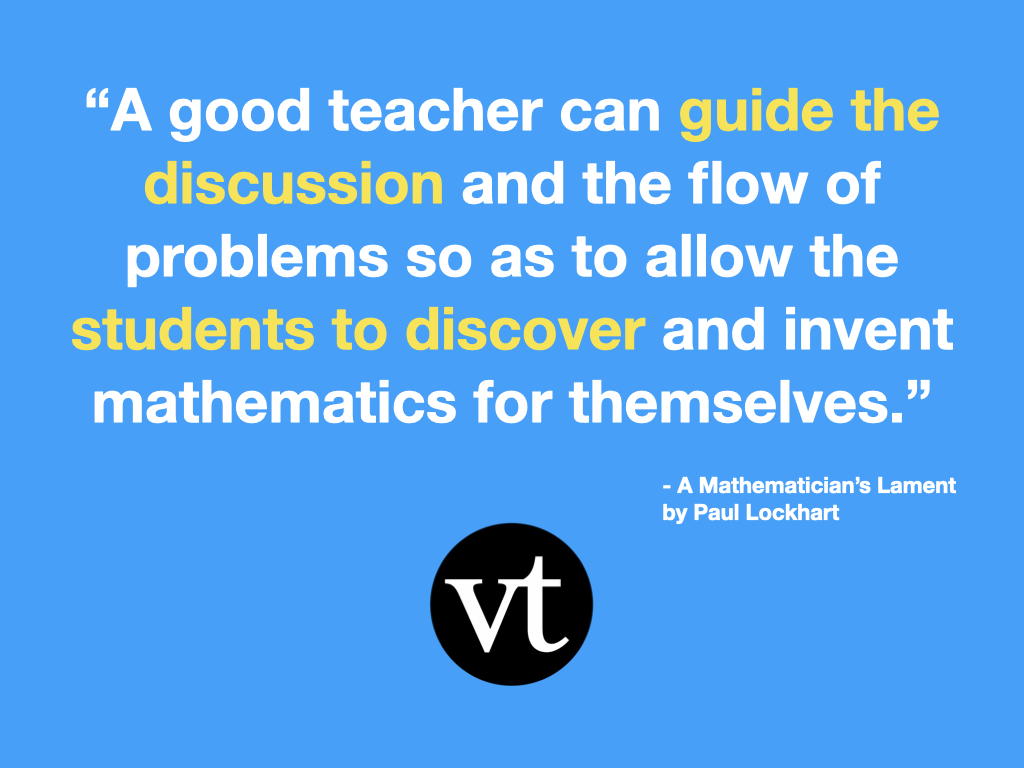6 Ways to Use VoiceThread in Math Courses

The quote above is from Paul Lockhart’s essay A Mathematician’s Lament. In the essay, Lockhart argues that the way mathematics is taught in schools is often ineffective and uninspiring. He believes that students should be encouraged to think creatively and to explore mathematical concepts for themselves. He also argues that discussion is an essential part of learning mathematics, as it allows students to share their ideas and to learn from each other.
VoiceThread can be a valuable tool for math teachers, because this is exactly what VoiceThread was designed to do: offer various ways to engage students through discussion, facilitate problem-solving, and promote mathematical thinking. Here are just some of the ways VoiceThread can be used in online math courses.
- Problem Solving Discussions: Teachers can upload math problems or equations to VoiceThread and ask students to provide their solutions or explanations. Students can respond with voice, webcam, or text comments, sharing their thought processes, strategies, and reasoning. This encourages critical thinking, collaboration, and the exploration of different problem-solving approaches.
- Visual Representations: VoiceThread allows for the uploads of images, diagrams, graphs, and videos too. Math teachers can upload visual representations of mathematical concepts, such as geometric figures, coordinate planes, or data charts. Students can analyze and discuss these visuals, identifying patterns, making connections, and applying mathematical concepts by using the Doodle Tool to annotate on the slides.
- Math Explanations and Tutorials: Students can create math explanations and tutorials using VoiceThread. They can record their voice or add text comments to explain mathematical concepts, demonstrate problem-solving steps, or provide examples. This allows for peer-to-peer learning, reinforces understanding, and develops communication and instructional skills.
- Math Discussions and Debates: VoiceThread enables asynchronous math discussions and debates. Teachers can pose math-related questions or prompts, and students can respond with their voice, webcam, or text comments, engaging in meaningful discussions. This encourages students to justify their mathematical reasoning, consider alternative perspectives, and deepen their understanding of mathematical concepts.
- Math Investigations and Projects: VoiceThread can support math investigations and projects. Students can upload their work, such as data sets, graphs, or mathematical models, and explain their findings or conclusions through voice, webcam, or text comments. This allows for the sharing of research, collaboration, and the presentation of mathematical concepts in a multimedia format.
- Math Reflections and Self-Assessment: VoiceThread can be used for math reflections and self-assessment. Students can record their reflections on their math learning, discussing their strengths, challenges, and areas for improvement. They can also assess their own work by providing voice or text comments on their solutions or mathematical reasoning.
These are just a few examples of how VoiceThread can be used by math teachers. The platform’s multimedia capabilities, interactive features, and collaborative nature make it a versatile tool for enhancing math instruction, promoting student engagement, and fostering mathematical thinking and communication.
